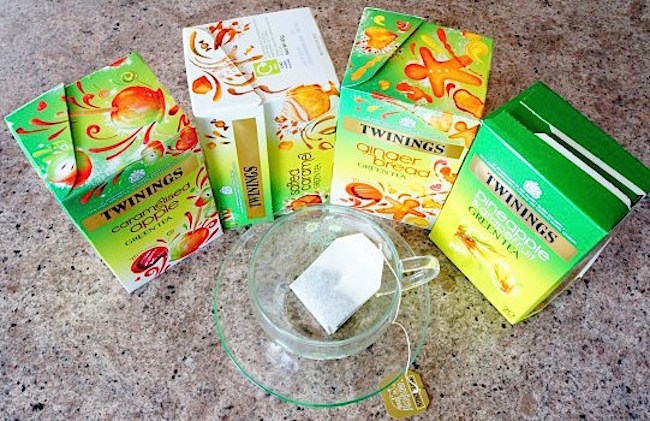
In the UK, where I’m from, people get really passionate about tea. It’s the first thing you offer someone who is a visitor to your home, and remembering how someone likes their tea made is one way of showing that you care about them. We’re also fussy about the ritual behind making tea (you should see what happens in my house when someone puts the milk in first). In this way, we’re kinda like the Japanese.
In Japan, they drink green tea rather than black tea, but their attitude towards it matches ours. It’s both something for all-day long refreshment, and for special occasions. They’re also really into the ceremony behind it, with chadou, or tea ceremony, being a celebrated art in Japan.
So, what happens when the tea companies try to make green tea happen in the UK? A whole lot of added flavourings, that’s what! Join us after the jump for a taste test!
In conducting this taste test, I had a hypothesis in mind – the British public can’t (in general) handle the bitter taste of green tea without first mixing it with other flavours they find more palatable. Today we’re going to be tasting four types of flavoured green tea: Salted Caramel, Caramelised Apple, Gingerbread, and Pineapple and Grapefruit. Let’s get started, shall we?
Salted Caramel Green Tea
PROS: Lots of flavour
Nice subtle aroma
CONS: Artifically sweetened somehow :(
A bit sickly
Caramelised Apple Green Tea
PROS: Not too sweet – refreshing apple flavour
CONS: Just tastes like apple-y tea
Gingerbread Green Tea
PROS: Amazing gingerbread aroma
Genuinely tastes like gingerbread
CONS: Taste isn’t subtle enough for everyday drinking
Pineapple and Grapefruit Green Tea
PROS: Strong fruity flavour and aroma
CONS: Stringless teabag is awkward to fish out
A little sour/citrusy
In general, the only one of Twinings’ green tea offerings that I really liked was the Gingerbread tea, but that might be because I happen to really like gingerbread. The Salted Caramel tasted decidedly artificial, and the Pineapple and Grapefruit was overly sour for something like tea. The strong flavours also completely washed out the taste of the green tea itself. Overall, I wasn’t bowled over by these takes on a Japanese classic.
While these kinds of flavoured green teas aren’t sold in Japan, some adventurous Twitter users in the country have been trying out some of the more unusual kinds of green tea you can buy abroad. The general consensus? “Weird, but good”:
トワイニングのオーストラリア限定、グリーンティー&レモン!出張にいった人に頼んで買ってきてもらった~♪日本人からすると不思議なカンジだけど、爽やかで飲みやすい。 pic.twitter.com/uJVONSq1Mp
— アニャースタシア (@a_nyah_stasia) August 11, 2014
▲ “Only sold by Twinings in Australia, it’s Green Tea and Lemon! I asked a friend to bring some back for me. To a Japanese person it’s quite a strange flavour but it’s very drinkable!”
https://twitter.com/its_me_izumi/status/521999312037744641
▲ “Organic tea! Certified in both the UK and Japan. Green tea and pomegranate might be a hit with the girls!”
https://twitter.com/ere_453f/status/539690812024451072
▲ “It’s green tea but it tastes like mango. This is British green tea! WEIRD!”
最近お気に入りのmighty leafに、お試しパックがあるのを初めて気付きました!今日はお試し箱とグリーンティー トロピカルを。ここのブレンドは不思議だけど凄く美味しい(^_^)今はおうちに6種類の箱が揃いました♪♪他のも気になる! pic.twitter.com/jtQfcwAUYZ
— macha (@machakoara100) February 27, 2013
▲ “Mighty Leaf trial packs. Today I’m trying Tropical Green Tea. It’s a bit of a weird blend but it’s really good! I’m excited to see what else is available.”
It’s worth noting also that cold, flavoured teas in cartons (including some green tea mixes) are sold at conbinis in Japan, but they taste more like fruit juice, and are a different thing altogether to regular green tea. Today we’re talking about hot, unsweetened green teas you can brew up yourself. Also, it seems that even the aforementioned cold juice teas tend to slightly weird some Japanese people out:
https://twitter.com/rokotsu_gayoku/status/475061763264626688
▲ “Lipton’s Peach Green Tea is pretty good! Mostly tastes like peach but with a subtle tea aftertaste. Definitely a very strange taste.”
https://twitter.com/toki281/status/455239681395802112
▲ “Muscat Green Tea, which tastes weird”
Before we wrap up our little taste test, there was one more thing that I had to try. It seems strange to me that a country so set in its tea-drinking ways would essentially try to turn healthy green tea into a speciality drink rather than simply substituting it for their beloved but less-healthy black tea. What if I brewed up a cup of green tea exactly as I would usually, by adding milk and sugar? Could this be an as-yet undiscovered taste sensation?
Green Tea with Milk and Sugar
I’m using semi-skimmed milk (1.7 per cent) and two sachets of white sugar I filched from a coffee shop. Also, I’m using a variety of green tea from one of the more “everyday” UK tea brands, Tetley -beloved by builders and office workers alike.
▼ Green tea with milk. Here we go…
Verdict: You know when you give a baby something it doesn’t like to drink and it all comes splooshing out of their mouth as their eyes go all googly, and they make this horrible gurgling noise? Yeah, that’s what happened when I tried to drink this…monstrous creation. It tastes like nothing so much as slightly aromatic sugared milk, a total affront to my British senses! Bleurgh!
Conclusion: It seems that, for those Brits who really can’t make themselves like the pure, clean taste of unadulterated green tea, the only option is to try to make it taste a bit more familiar. Clearly, simply adding the usual milk and/or sugar creates a monstrous abomination that’s only fit for swilling lavatories. Therefore, the British tea companies seem to have decided to mix in flavours that everyone in the UK likes, such as gingerbread (like mum used to make!) and caramel apples (just like on Bonfire Night!). There’s probably also a bit of coffee-company envy going on here. “They have salted caramel lattes? Two can play at that game!” In general, it’s not really surprising that Twinings JP sticks to selling mostly black tea varieties in Japan. We’re not sure how well these flavoured green teas would go down with the Japanese tea-buying market. Then again, Japan is the land of the weird flavour combination, so who knows?
All photos © Evie Lund/RocketNews24

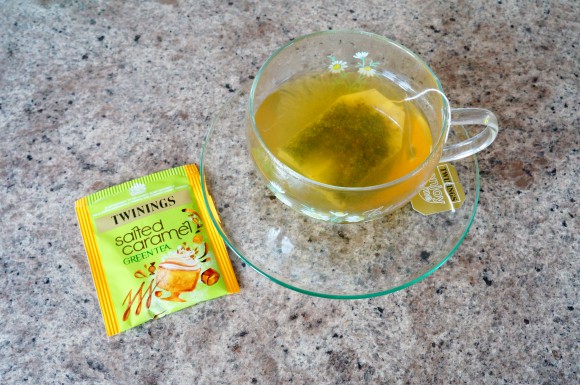
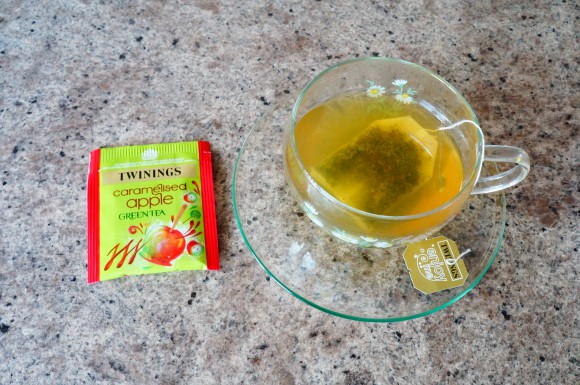
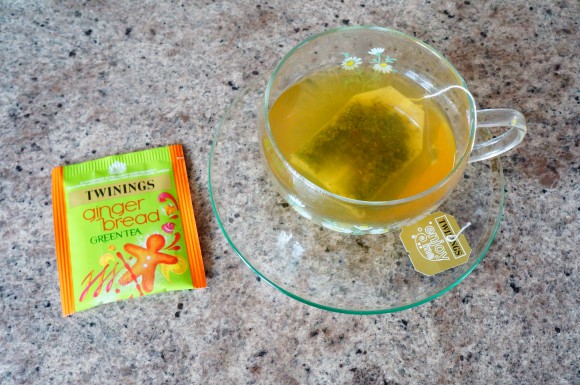
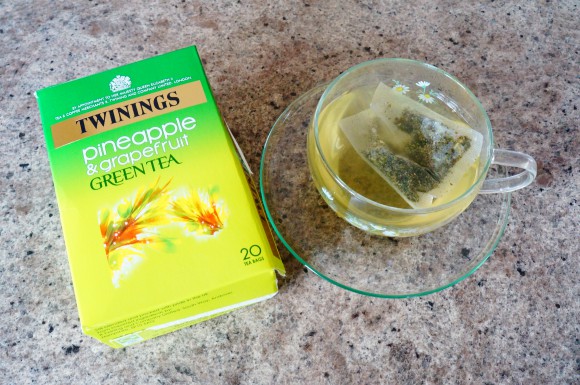
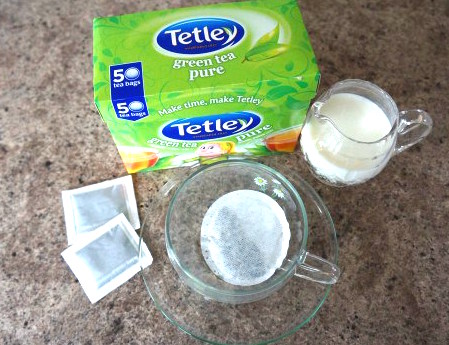
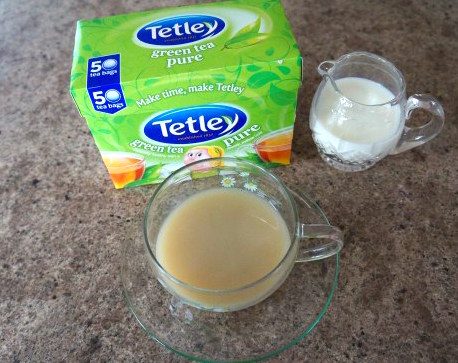
 Our English writer rates 15 teas from Japanese conbini, is fully hydrated for the rest of summer
Our English writer rates 15 teas from Japanese conbini, is fully hydrated for the rest of summer Drink Green! We check out the amazing “Green Tea Party” presented by Isetan and Ito En! 【Pics】
Drink Green! We check out the amazing “Green Tea Party” presented by Isetan and Ito En! 【Pics】 Starbucks’ first-ever Japanese hojicha tea Frappuccino is here, but how’s it taste?【Taste test】
Starbucks’ first-ever Japanese hojicha tea Frappuccino is here, but how’s it taste?【Taste test】 We spill the tea–a guide to all of Japan’s Gogo no Kocha Milk Teas sold in the wintertime
We spill the tea–a guide to all of Japan’s Gogo no Kocha Milk Teas sold in the wintertime Häagen-Dazs Japan’s Yuzu Green Tea Float — How to make the super-easy matcha summer dessert drink
Häagen-Dazs Japan’s Yuzu Green Tea Float — How to make the super-easy matcha summer dessert drink McDonald’s new Happy Meals offer up cute and practical Sanrio lifestyle goods
McDonald’s new Happy Meals offer up cute and practical Sanrio lifestyle goods Studio Ghibli glasses cases let anime characters keep an eye on your spectacles
Studio Ghibli glasses cases let anime characters keep an eye on your spectacles Super Nintendo World expansion gets delayed for several months at Universal Studios Japan
Super Nintendo World expansion gets delayed for several months at Universal Studios Japan All-you-can-drink Starbucks and amazing views part of Tokyo’s new 170 meter-high sky lounge
All-you-can-drink Starbucks and amazing views part of Tokyo’s new 170 meter-high sky lounge Is the new Shinkansen Train Desk ticket worth it?
Is the new Shinkansen Train Desk ticket worth it? Arrest proves a common Japanese saying about apologies and police
Arrest proves a common Japanese saying about apologies and police The oldest tunnel in Japan is believed to be haunted, and strange things happen when we go there
The oldest tunnel in Japan is believed to be haunted, and strange things happen when we go there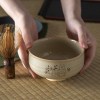 Studio Ghibli adds magic to your matcha with new tea ceremony whisk and bowl
Studio Ghibli adds magic to your matcha with new tea ceremony whisk and bowl Problem solved: How to open a Japanese convenience store onigiri rice ball【Pics and video】
Problem solved: How to open a Japanese convenience store onigiri rice ball【Pics and video】 The top 11 Japanese summer festivals, according to travellers
The top 11 Japanese summer festivals, according to travellers Disney princesses get official manga makeovers for Manga Princess Cafe opening in Tokyo
Disney princesses get official manga makeovers for Manga Princess Cafe opening in Tokyo More foreign tourists than ever before in history visited Japan last month
More foreign tourists than ever before in history visited Japan last month Starbucks reopens at Shibuya Scramble Crossing with new look and design concept
Starbucks reopens at Shibuya Scramble Crossing with new look and design concept Beautiful new Final Fantasy T-shirt collection on the way from Uniqlo【Photos】
Beautiful new Final Fantasy T-shirt collection on the way from Uniqlo【Photos】 Foreign English teachers in Japan pick their favorite Japanese-language phrases【Survey】
Foreign English teachers in Japan pick their favorite Japanese-language phrases【Survey】 Japanese convenience store packs a whole bento into an onigiri rice ball
Japanese convenience store packs a whole bento into an onigiri rice ball We try out “Chan Ramen”, an underground type of ramen popular in the ramen community
We try out “Chan Ramen”, an underground type of ramen popular in the ramen community Studio Ghibli releases Kiki’s Delivery Service chocolate cake pouches in Japan
Studio Ghibli releases Kiki’s Delivery Service chocolate cake pouches in Japan Japan’s bone-breaking and record-breaking roller coaster is permanently shutting down
Japan’s bone-breaking and record-breaking roller coaster is permanently shutting down New definition of “Japanese whiskey” goes into effect to prevent fakes from fooling overseas buyers
New definition of “Japanese whiskey” goes into effect to prevent fakes from fooling overseas buyers Our Japanese reporter visits Costco in the U.S., finds super American and very Japanese things
Our Japanese reporter visits Costco in the U.S., finds super American and very Japanese things Studio Ghibli unveils Mother’s Day gift set that captures the love in My Neighbour Totoro
Studio Ghibli unveils Mother’s Day gift set that captures the love in My Neighbour Totoro Foreign passenger shoves conductor on one of the last full runs for Japan’s Thunderbird train
Foreign passenger shoves conductor on one of the last full runs for Japan’s Thunderbird train Domino’s Japan now sells…pizza ears?
Domino’s Japan now sells…pizza ears? New Japanese KitKat flavour stars Sanrio characters, including Hello Kitty
New Japanese KitKat flavour stars Sanrio characters, including Hello Kitty Kyoto creates new for-tourist buses to address overtourism with higher prices, faster rides
Kyoto creates new for-tourist buses to address overtourism with higher prices, faster rides Sales of Japan’s most convenient train ticket/shopping payment cards suspended indefinitely
Sales of Japan’s most convenient train ticket/shopping payment cards suspended indefinitely Sold-out Studio Ghibli desktop humidifiers are back so Totoro can help you through the dry season
Sold-out Studio Ghibli desktop humidifiers are back so Totoro can help you through the dry season Japanese government to make first change to romanization spelling rules since the 1950s
Japanese government to make first change to romanization spelling rules since the 1950s Ghibli founders Toshio Suzuki and Hayao Miyazaki contribute to Japanese whisky Totoro label design
Ghibli founders Toshio Suzuki and Hayao Miyazaki contribute to Japanese whisky Totoro label design Doraemon found buried at sea as scene from 1993 anime becomes real life【Photos】
Doraemon found buried at sea as scene from 1993 anime becomes real life【Photos】 Tokyo’s most famous Starbucks is closed
Tokyo’s most famous Starbucks is closed One Piece characters’ nationalities revealed, but fans have mixed opinions
One Piece characters’ nationalities revealed, but fans have mixed opinions We asked a Uniqlo employee what four things we should buy and their suggestions didn’t disappoint
We asked a Uniqlo employee what four things we should buy and their suggestions didn’t disappoint Princesses, fruits, and blacksmiths: Study reveals the 30 most unusual family names in Japan
Princesses, fruits, and blacksmiths: Study reveals the 30 most unusual family names in Japan Starbucks blends Japanese and Western flavours together in new Frappuccino
Starbucks blends Japanese and Western flavours together in new Frappuccino New matcha Pocky from Japan is a heavenly treat for green tea lovers
New matcha Pocky from Japan is a heavenly treat for green tea lovers Does Starbucks Japan’s new rice cake Frappuccino live up to the hype?
Does Starbucks Japan’s new rice cake Frappuccino live up to the hype? Green Apple Jelly v Baked Pink Apple: The Starbucks Frappuccino showdown we’ve been waiting for
Green Apple Jelly v Baked Pink Apple: The Starbucks Frappuccino showdown we’ve been waiting for Starbucks Japan welcomes autumn with Caramel Apple Rooibos Tea
Starbucks Japan welcomes autumn with Caramel Apple Rooibos Tea New illy matcha coffee drinks combine green tea with espresso for a limited time
New illy matcha coffee drinks combine green tea with espresso for a limited time Trying out Starbucks Japan’s ultra relaxing 2021 seasonal summer tea drinks【Taste Test】
Trying out Starbucks Japan’s ultra relaxing 2021 seasonal summer tea drinks【Taste Test】 Sharp’s Ocha-presso brings traditional Japanese flavor to your kitchen
Sharp’s Ocha-presso brings traditional Japanese flavor to your kitchen Suntory explains the simple science behind how it makes its amazing clear tea beverages【Video】
Suntory explains the simple science behind how it makes its amazing clear tea beverages【Video】 Stylish green tea “chablets” from Shizuoka are our new way favorite way to grab a cuppa
Stylish green tea “chablets” from Shizuoka are our new way favorite way to grab a cuppa Nara University study finds some common teas can neutralize COVID-19
Nara University study finds some common teas can neutralize COVID-19 Oolong tea lattes get a place on the Starbucks Japan menu, but do they get one in our heart too?
Oolong tea lattes get a place on the Starbucks Japan menu, but do they get one in our heart too? Starbucks Japan creates a green tea slushie with sencha, apple, perilla and sansho pepper
Starbucks Japan creates a green tea slushie with sencha, apple, perilla and sansho pepper Still using water to make your instant noodles? You’re missing out on amazing green tea noodles!
Still using water to make your instant noodles? You’re missing out on amazing green tea noodles! Attack on Titan teas are selling out faster than a giant can eat a human
Attack on Titan teas are selling out faster than a giant can eat a human Seven places that aren’t Starbucks where you can get delicious sakura cherry blossom drinks in Japan
Seven places that aren’t Starbucks where you can get delicious sakura cherry blossom drinks in Japan
Leave a Reply